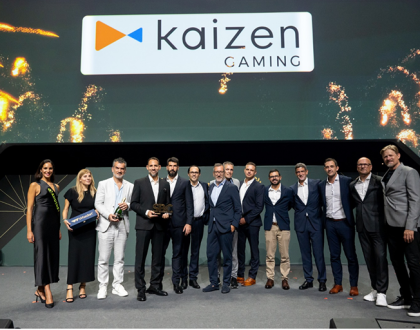The Churn Challenge – Keeping Players Engaged

Many game developers face the challenging task of retaining players and preventing churn in the highly competitive gaming industry. Player churn refers to the phenomenon where players stop engaging with a game, leading to a decline in retention rates. It is a critical issue that can significantly impact a game's success and profitability. In this blog post, we will discuss effective strategies that developers can use to keep players engaged and reduce churn.
Understanding Player Churn
What Is Player Churn?
A key concept in the world of gaming and app development, player churn refers to the rate at which players or users stop engaging with a game or application over a specific period of time. This metric is crucial for developers and companies to monitor as it directly impacts the success and longevity of their product. The higher the churn rate, the more users are leaving, leading to decreased revenue and potentially tarnished reputation.
Factors Contributing to Churn
To effectively address and combat player churn, it is vital to identify the factors that contribute to this phenomenon. Several key elements can play a role in driving players away from a game or app, including poor gameplay experience, lack of updates and fresh content, technical issues and bugs, and unresponsive customer support.
- Poor gameplay experience: Bland or repetitive gameplay can quickly disengage players
- Lack of updates and fresh content: Players seek new challenges and content to maintain interest
- Technical issues and bugs: Glitches and crashes can frustrate and drive players away
- Unresponsive customer support: Lack of assistance can lead to player dissatisfaction and abandonment
Perceiving and addressing these factors promptly can significantly impact player retention rates and enhance the overall player experience.
Player Retention Strategies
Plus, in addition to understanding the factors contributing to player churn, implementing player engagement strategies and personalized gaming experiences can help bolster player retention. Providing incentives for consistent play and creating community events and challenges can foster a sense of belonging and investment in the game.
- Player engagement strategies: Implement features to keep players immersed and interested
- Personalized gaming experiences: Tailor gameplay to individual player preferences for a more enjoyable experience
- Incentives for consistent play: Reward players for regular engagement to encourage continued interest
- Community events and challenges: Foster a sense of community and competition to maintain player interest
By focusing on player retention strategies and continuously refining the gaming experience, developers can effectively combat player churn and keep users engaged in the long run.
Measuring Player Engagement and Churn
Some of the critical aspects of managing a game's success lie in understanding player engagement and churn rates. It is imperative for game developers to have a clear picture of how players interact with the game and when they start to lose interest. By measuring player engagement and churn, developers can make informed decisions to improve retention rates and keep players coming back for more.
Key Metrics for Assessing Engagement
To effectively measure player engagement, developers need to consider key metrics such as Daily Active Users (DAU), Monthly Active Users (MAU), session length, retention rates, and in-game actions. These metrics provide valuable insights into how often players are active, how long they spend in the game, and whether they are completing meaningful actions within the game. By monitoring and analyzing these key metrics, developers can identify patterns, trends, and areas for improvement to enhance player engagement.
Analytics Tools and Techniques
An imperative component of measuring player engagement and churn is utilizing analytics tools and techniques. These tools help developers track player behavior, identify pain points, and measure the effectiveness of engagement strategies. Popular analytics tools such as Google Analytics, Flurry, and Mixpanel offer robust features for collecting and analyzing data. By leveraging these tools, developers can gain valuable insights into player actions, preferences, and tendencies, enabling them to optimize the gaming experience for better engagement and retention.
Plus, having a solid understanding of analytics techniques such as cohort analysis, A/B testing, and funnel analysis is crucial for interpreting data accurately and making data-driven decisions. These techniques allow developers to segment players based on behavior, test different strategies to see what resonates best with players, and identify where players may be dropping off in the gameplay experience. By applying analytics tools and techniques effectively, developers can proactively address issues, optimize engagement strategies, and ultimately improve player retention.
Strategies to Reduce Churn
Enhancing Game Content and Features
For game developers looking to reduce churn, focusing on enhancing game content and features is crucial. Regular updates that introduce new levels, challenges, characters, and gameplay mechanics can keep players engaged and excited about what's next. Offering a variety of content that caters to different player preferences can help maintain interest and prevent boredom. Including social features such as leaderboards, multiplayer modes, and in-game events can also foster a sense of community and friendly competition among players, further increasing the likelihood of player retention.
Personalizing Player Experiences
For game developers aiming to reduce churn and increase player engagement, personalizing player experiences is key. By collecting and analyzing player data, developers can tailor gameplay experiences to individual preferences. This can involve recommending personalized challenges, rewards, or in-game purchases based on a player's gameplay behavior and preferences. Providing players with a sense of personalized progression can create a deeper connection to the game and increase the likelihood of continued play.
The ability to personalize player experiences can lead to higher player satisfaction and retention rates. By understanding each player's unique preferences and behavior patterns, developers can create a more immersive and enjoyable gaming experience that keeps players coming back for more.
The Role of Community in Player Retention
Building and Nurturing Online Communities
All successful games have one thing in common: a thriving online community. Players who feel connected to a larger group are more likely to continue playing a game long term. Building and nurturing online communities is crucial in keeping players engaged. Game developers can create forums, social media groups, and in-game chat features to facilitate interaction among players. Encouraging players to share tips, strategies, and experiences enhances the sense of belonging and fosters a supportive environment.
Leveraging Social Features for Engagement
On top of building communities, leveraging social features within the game itself can significantly boost player engagement. In-game social features such as multiplayer modes, leaderboards, and guilds create opportunities for players to collaborate and compete with one another. These features not only enhance the gameplay experience but also keep players invested in the game for longer periods. By tapping into the innate human desire for social interaction and friendly competition, game developers can cultivate a sense of camaraderie among players.
Building a robust online community and incorporating engaging social features are crucial elements in the long-term success of a game. By fostering a sense of belonging and creating avenues for social interaction, developers can drastically improve player retention rates and boost overall player satisfaction. It's imperative for game developers to prioritize community-building efforts and leverage social features to keep players engaged and excited to continue playing.
Rewards and Incentives Programs
Designing Effective Reward Systems
The key to keeping players engaged in a game is the implementation of effective reward systems. Unlike in the past where generic rewards were sufficient, players now crave personalized and meaningful incentives that match their preferences and playing style. The rewards should also be diverse, offering a mix of short-term and long-term goals to keep players motivated over time. By incorporating rewards that are challenging but achievable, developers can create a sense of accomplishment that keeps players coming back for more.
Balancing Rewards and Player Motivations
For developers, finding the right balance between rewards and player motivations is crucial in keeping players engaged. Player motivations can vary widely, from a desire for social interaction to a need for mastery or achievement. It's imperative to understand these motivations and tailor rewards accordingly. Offering rewards that align with different player motivations can help create a sense of inclusivity and cater to a diverse player base.
Players must feel that the rewards are worth the effort they put into the game. Player motivation can quickly wane if rewards are too difficult to obtain or if they feel insignificant. By regularly reviewing and adjusting the reward system based on player feedback and behavior, developers can ensure that the rewards remain appealing and motivating.
Feedback Loops and Player Input
Encouraging and Managing Player Feedback
Keep a constant line of communication open with your players to gather valuable feedback on their experience with the game. Create channels such as forums, social media groups, or in-game feedback forms where players can share their thoughts and suggestions. It's important to listen actively to what the players have to say and address their concerns promptly to show that their feedback is valued.
Integrating Player Suggestions into Game Development
The key to keeping players engaged is to show them that their input is not only heard but also implemented in the game. Game developers should carefully evaluate player suggestions, consider the impact on gameplay and balance, and integrate feasible ideas into the development roadmap. By incorporating player suggestions, you can create a sense of ownership and community among your player base.
This process not only benefits the players by making them feel involved in the game's development but also contributes to the overall improvement of the gaming experience. By actively engaging with player suggestions and implementing changes based on their feedback, you can cultivate a loyal player base and increase player retention in the long run.
Final Words
To wrap up, keeping players engaged in a game is important for its success. The churn challenge, which refers to losing players over time, can be addressed by understanding player motivations, providing frequent updates and new content, and fostering a sense of community. By implementing strategies to retain players and keep them coming back for more, game developers can create a sustainable and thriving player base for their game.
FAQs:
What is player churn?
Player churn refers to the rate at which players stop engaging with a game or application over a specific period of time.
What factors contribute to player churn?
Several factors contribute to player churn, including poor gameplay experience, lack of updates, technical issues, and unresponsive customer support.
How can developers combat player churn?
Developers can combat player churn by implementing player engagement strategies, providing personalized gaming experiences, and enhancing game content and features.
How do analytics tools help in reducing player churn?
Analytics tools help developers track player behavior, identify pain points, and measure the effectiveness of engagement strategies, enabling them to optimize the gaming experience for better retention.
Why is community-building important for player retention?
Building a strong online community fosters a sense of belonging among players, encouraging continued engagement and long-term retention.
Recommended Posts

James Curwen: Shaping Yggdrasil’s Future
October 4, 2024

Kaizen Gaming’s Success at SBC Awards 2024
October 4, 2024

Sportingtech Boosts Security with Continent 8
October 4, 2024




